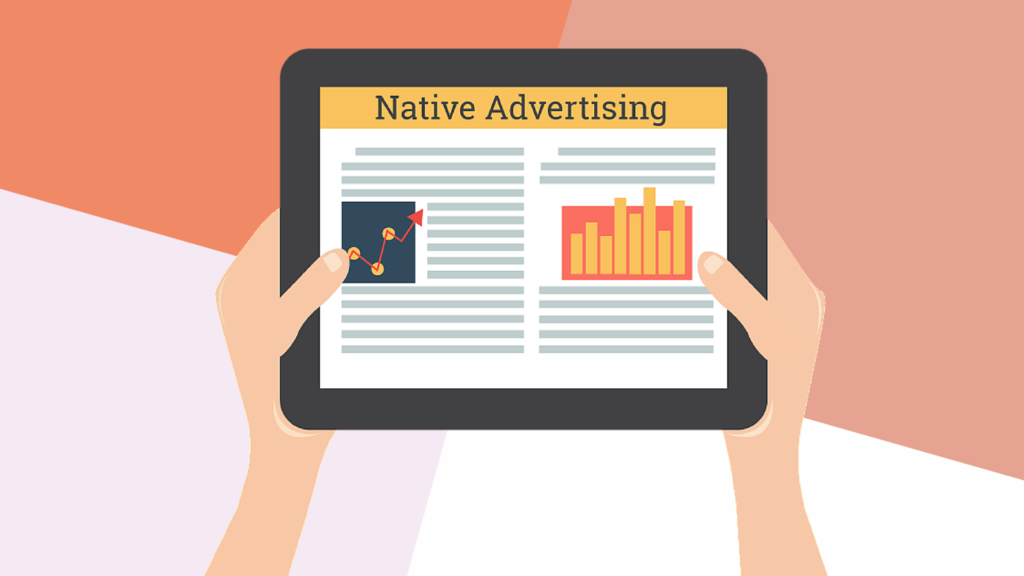Written By Jack Woods | 10/16/23
Introduction to Retargeting and Native Ads
Understanding retargeting and its significance
Retargeting, also known as remarketing, refers to the strategic marketing technique where targeted ads are shown to individuals who have previously visited a specific website. This powerful tool allows advertisers to tailor their messaging and promotions to reach potential customers who have already demonstrated an interest in their products or services. By capturing the attention of these prospects once again, retargeting helps to increase brand awareness and drive conversions.
The Basics of Retargeting

By utilizing cookies or pixel-based tracking, marketers can strategically display relevant ads to these users as they browse other websites within the retargeting network. This personalized approach allows brands to stay top-of-mind and nudges potential customers towards making a purchase or taking another desired action.
How retargeting works
Retargeting works by placing a small piece of code, commonly known as a pixel, on the advertiser’s website. When a user visits the website, the pixel anonymously tracks their behavior and actions. This data is then used to create customized ads that are later displayed to the user as they continue to browse other websites or social media platforms. The goal is to re-engage with potential customers, reminding them of the brand and enticing them to take the next step.
Benefits of retargeting campaigns
Retargeting campaigns offer numerous benefits for advertisers. Firstly, it allows for precise targeting and segmentation, ensuring that ads are only shown to relevant audiences. This reduces wasted ad spend and increases the chances of converting leads into customers. Retargeting also provides an opportunity for brand reinforcement, as repeated exposure can strengthen brand recall and recognition. Additionally, since retargeting focuses on individuals who have already shown interest, it often yields higher conversion rates compared to other advertising strategies.
Common misconceptions about retargeting
Despite its effectiveness, retargeting is not always well-understood. One common misconception is that retargeting is intrusive or annoying to users. However, when done correctly, retargeting can actually enhance user experience by providing relevant and personalized content. Another misconception is that retargeting is expensive. While it may require a dedicated budget, the ability to target a specific audience and the potential for increased conversions make it a worthwhile investment.
The Synergistic Relationship: Retargeting with Native Ads

Understanding the concept of retargeting with native ads
When combined, retargeting with native ads creates a powerful synergy to enhance user experience and boost conversions. By retargeting individuals who have already shown interest in a brand, native ads can be tailored to match their preferences, effectively delivering personalized and engaging content. This strategic alignment ensures that users are more likely to respond positively to the advertisement while enjoying a seamless browsing experience.
Why combining retargeting and native ads yields better results
The combination of retargeting and native ads offers several advantages. Firstly, it allows brands to leverage the strengths of each method: retargeting targets a specific audience and native ads provide non-intrusive, visually appealing content.
Secondly, retargeting with native ads helps maintain consistency in the user’s journey by delivering personalized messages based on their previous interactions. This personalized touch enhances the chances of conversion and fosters a positive perception of the brand.
Leveraging Retargeting: Best Practices

Identifying the right audience for retargeting campaigns
To maximize the effectiveness of retargeting campaigns, it’s crucial to identify the most relevant audience segments.
By analyzing data related to website interactions and user behaviors, marketers can gain insights into the demographics, preferences, and motivations of potential customers. Armed with this information, they can create personalized retargeting campaigns that resonate with the target audience, increasing the chances of conversion.
Optimizing ad frequency and timing
Finding the right balance in ad frequency and timing is essential to prevent ad fatigue and maintain user engagement. Bombarding users with excessive ads may lead to annoyance and a negative perception of the brand.
On the other hand, failing to retarget at the right moment may result in missed opportunities. By analyzing user behavior data, such as the frequency of visits or time spent on specific webpages, marketers can optimize the cadence and timing of retargeting ads, ensuring they are neither overwhelming nor intrusive.
Personalization in retargeting ads
Personalization is a key element in retargeting campaigns and can significantly impact their success. By using dynamic creative optimization, marketers can serve tailored ads to different segments of their retargeting audience.
This personalization can involve displaying relevant products that match their previous browsing history, or highlighting personalized offers. Creating a personalized experience enhances user engagement and improves the effectiveness of retargeting efforts.
Measuring and analyzing retargeting campaign performance
To evaluate the effectiveness of retargeting campaigns, it’s important to track and analyze key metrics. These may include click-through rates, conversion rates, cost per conversion, and return on ad spend.
Analyzing the data helps marketers identify areas of improvement, optimize campaign settings, and refine their targeting strategies. Additionally, using A/B testing allows for a comparison of different ad variations, enabling insights into what resonates best with the target audience.
Why combining retargeting and native ads yields better results
Retargeting enhances the effectiveness of native ads by targeting users who have already demonstrated an interest in a brand or its offerings. By reaching users at different stages of the buyer’s journey, brands can deliver more customized messages and nurture prospects towards making a purchase. This combination of retargeting and native ads increases overall engagement, click-through rates, and ultimately, conversions.
Challenges and Ethical Boundaries

Privacy concerns in retargeting and native ads
Retargeting and native ads raise privacy concerns as they rely on tracking user behavior and capturing user data. Advertisers must prioritize transparency and provide users with clear information regarding data collection, usage, and opting out of retargeting campaigns. Implementing privacy measures, such as anonymizing data and complying with data protection regulations, helps build trust and reassures users that their privacy is respected.
Ad Fatigue: Dealing with repetitive ads
Excessive exposure to the same retargeting ads can lead to ad fatigue, where users become annoyed, disinterested, or even develop negative associations with the brand. To mitigate this issue, advertisers should carefully manage ad frequency and rotate creatives to keep the messaging fresh and engaging. Implementing frequency caps and utilizing diverse ad formats can help maintain user interest and prevent ad fatigue.
Avoiding misleading or deceptive native ads
Native ads should always maintain transparency and avoid misleading or deceptive practices. Advertisers should clearly indicate that the content is sponsored or promoted, ensuring users understand they are consuming advertising material. Native ads should deliver on their promises and provide genuine content that aligns with the user’s expectations# The Power of Retargeting & Native Ads: Boosting Conversions and Enhancing User Experience
Retargeting and Native Ads
Retargeting and native ads have emerged as powerful tools in the field of digital marketing, revolutionizing the way brands connect with their target audience. In this article, we will explore the significance of retargeting and the role of native ads in modern advertising.
Understanding retargeting and its significance
Retargeting, also known as remarketing, is a technique that allows advertisers to serve ads to users who have previously engaged with their website or mobile app. By utilizing cookies or other tracking methods, brands can strategically display relevant ads to those who have shown interest in their products or services. This targeted approach significantly enhances the effectiveness of ad campaigns, increasing the likelihood of conversions.
Common misconceptions about retargeting
Despite its effectiveness, retargeting is often associated with certain misconceptions. One common myth is that retargeting is invasive and annoying to users. However, when implemented correctly, retargeting can provide a valuable and personalized user experience by presenting relevant ads based on the user’s interests. Another misconception is that retargeting is only applicable to e-commerce businesses. In reality, retargeting can be beneficial for a wide range of industries, including B2B services, travel, and even nonprofit organizations.
The Future of Retargeting and Native Ads
Emerging trends in retargeting and native advertising
The field of retargeting and native advertising is continuously evolving with emerging trends. One significant trend is the increased adoption of automation and machine learning techniques to optimize retargeting campaigns. Automation allows for real-time, data-driven decision-making and personalized ad delivery, enhancing campaign effectiveness.
Innovations in native ads for better user engagement
Native ads continue to evolve to enhance user engagement and deliver seamless brand experiences. Innovations include interactive and immersive ad formats, such as playable ads, quizzes, and 360-degree experiences. By engaging users in a more interactive manner, these advancements capture attention, increase interaction rates, and leave a lasting impression.
Case Studies of Successful Retargeting with Native Ads

Case Study 1: The effectiveness of retargeting and native ads in e-commerce
A fashion brand utilized a combination of retargeting and native ads to drive conversions for their e-commerce platform. By segmenting their audience based on browsing behavior and personalizing their native ads, they achieved a 40% increase in click-through rates and a 25% increase in overall conversions compared to their previous remarketing campaigns. The non-intrusive nature of native ads significantly contributed to the campaign’s success.
Case Study 2: Retargeting and native ads in the travel industry – driving bookings
A travel agency targeted users who had shown interest in specific travel destinations but had not made a booking. By deploying native ads featuring exclusive travel deals and enticing visuals, the agency achieved a 20% increase in bookings compared to their previous retargeting efforts. The seamless integration of native ads into the travel booking platform enhanced user experience and motivated users to take action.
Closing Statements
The power of retargeting with native ads lies in their ability to boost conversions and enhance user experience. Retargeting allows brands to engage with users who have shown interest in their offerings, while native ads offer a non-disruptive and organic way to deliver brand messages. By combining these strategies, brands can achieve higher engagement, click-through rates, and ultimately, conversions. Strategic planning, personalization, and adherence to ethical guidelines are crucial for successful implementation.













